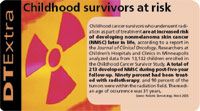- Acne
- Actinic Keratosis
- Aesthetics
- Alopecia
- Atopic Dermatitis
- Buy-and-Bill
- COVID-19
- Case-Based Roundtable
- Chronic Hand Eczema
- Chronic Spontaneous Urticaria
- Drug Watch
- Eczema
- General Dermatology
- Hidradenitis Suppurativa
- Melasma
- NP and PA
- Pediatric Dermatology
- Pigmentary Disorders
- Practice Management
- Precision Medicine and Biologics
- Prurigo Nodularis
- Psoriasis
- Psoriatic Arthritis
- Rare Disease
- Rosacea
- Skin Cancer
- Vitiligo
- Wound Care
Article
Laser immunotherapy shows promise against melanoma
Chicago — A new combination treatment for advanced metastatic melanoma has performed so impressively in anecdotal cases that its developers are seeking funding for a National Cancer Institute (NCI) pilot trial.

By pretreating patients with imiquimod (Aldara, 3M), then applying an 805 nm laser, researchers have achieved complete local responses in two of three patients treated thus far.
"One stage four patient is a complete responder; a stage three is a complete local responder; and one patient died. But two out of three isn't bad, especially with this type of cancer," says Mark F. Naylor, M.D., adjunct assistant member, Clinical Pharmacology Research Program, Oklahoma Medical Research Foundation.
"Vaccine therapy has shown a lot of promise but still hasn't delivered a therapy which has been reproducible in more than one center where it outperforms high-dose IL-2, for example, in terms of curing patients with stage three or four unresectable disease," Dr. Naylor says. "In part, the problem is that our understanding of the immune system is still not good enough to really get it to work."
In this regard, recent advances in knowledge regarding how suppressor cells work, as well as how the immune system's regulatory mechanisms interfere with autoimmune responses, may hold the key.
"Many of the regulatory mechanisms that prevent us from dying of systemic lupus or other autoimmune diseases work against us when we're trying to use the immune system to treat cancer. Cancer cells and normal cells are much more similar than they are different. The trick is to get the immune system to go after the cancer cell without causing a significant problem with the normal cells," Dr. Naylor explains.
Improving understanding
In the past couple of years, he adds, "There's been an explosion in our understanding of regulatory T-cells. That is going to provide a big boost to vaccine therapy for melanoma. By understanding how these regulatory mechanisms work to prevent autoimmune diseases, and learning how to manipulate them, we can probably do a much better job of breaking tolerance to tumor antigens."
The NCI's Steven A. Rosenberg has achieved some success in this regard (Dudley ME et al. J Clin Oncol. 2005;23:2346-2357).
Dr. Naylor says, "He's doing treatments such as aggressive chemotherapy that includes cyclophosphamide and then trying to reconstitute the patient's immune response by infusing autologous tumor-reactive lymphocytes expanded in vitro. This is, in some ways, a brute-force effort to overcome the suppressive effects of regulatory T-cells that's probably not going to be practical on a large scale in the real world. Our protocols can be done virtually anywhere, most on an outpatient basis."
About 10 years ago, Dr. Chen began developing laser treatment protocols to stimulate immune responses for treating cancers in an animal model (Chen WR et al. Int J Cancer. 2003 Dec 20;107(6):1053-1057; Mol Biotechnol. 2003 Sep;25(1):45-52; Int J Cancer. 1999 May 31;81(5):808-812).
"Sometimes they would get 30 percent of their rats to survive," Dr. Naylor says.
At the same time, Dr. Naylor was working with 3M Pharmaceuticals on immunomodulatory drugs such as the toll receptor agonist imiquimod.
Newsletter
Like what you’re reading? Subscribe to Dermatology Times for weekly updates on therapies, innovations, and real-world practice tips.











